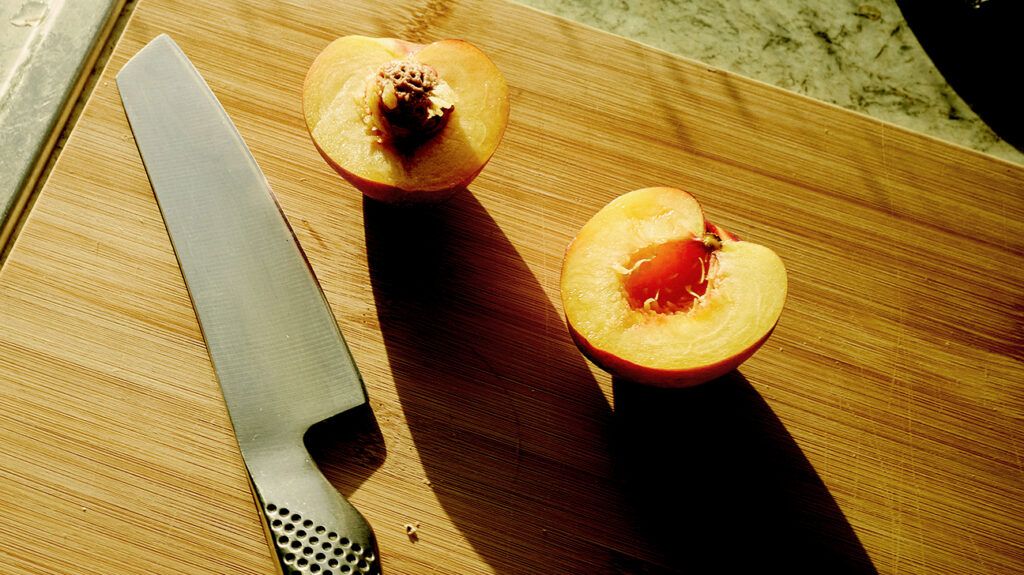Some low sugar fruits include strawberries, oranges, blackberries, and peaches. All fruit contains sugar, although some varieties have a higher content than others.
Fruit is a healthful way to cater to a sweet tooth and add nutrients to the diet. However, some fruit, such as bananas and mangoes, have a higher amount of natural sugar than many others.
Low-sugar fruits can still provide the fiber, vitamins, and minerals a person requires. There are many tasty options that people can enjoy on their own as a snack, as part of a fruit salad, or in a smoothie.

Although they taste sweet, there are
Strawberries, like many other berries, are often high in fiber and contain very little sugar.
There are
Like strawberries, these berries also contain roughly
They are also a good source of antioxidants. It is interesting to note that blueberries contain around
Not many people would pick up a
People can squeeze a lemon or lime into sparkling water to replace other sugary carbonated beverages, or even squeeze lemon juice over a salad instead of using a salad dressing.
A popular summer snack, 100g of honeydew melon contains around
Honeydew melon also contains potassium, vitamin C, and iron.
Oranges are a popular fruit and 100g contains roughly
Orange juice and all other fruit juices bought from the supermarket may contain added sugars. If a person wants to limit their sugar intake, it is usually better to eat the fruit itself rather than drink its juice.
This low-sugar fruit is a favorite breakfast food. The amount of sugar may vary slightly by variety, but generally 100g of grapefruit contains
Half a medium-sized grapefruit contains
Avocados are almost sugar-free, with 100g of avocado containing
Regardless of its sugar content, fruit should be part of a balanced and healthful diet plan.
Benefits of increasing a person’s daily intake of fruit include:
- losing weight or maintaining a healthy weight
- getting essential vitamins, minerals, and fiber
- reducing the risk of cancer and other diseases
Research from the Centers for Disease Control and Prevention (CDC) advise that adults should consume roughly
A person can incorporate low-sugar fruit into their diet in
Breakfast
People who usually eat cereal should be sure to choose cereal without added sugars. Try adding sliced berries or a peach on top. Alternatively, eating a handful of berries with plain low-fat yogurt is also a healthful option.
Instead of drinking fruit juice, which has a high sugar content, squeezing the juice of half a lemon or lime into sparkling water can be a refreshing alternative.
Lunch and dinner
Even a savory salad can include low-sugar fruit elements. Try using lemon or lime juice as a dressing, or slicing an avocado on top. Orange slices and berries also make great salad toppings.
Whole fruits make an excellent alternative to processed desserts. Low-sugar fruit can be eaten with plain yogurt or made into a fruit salad by adding a small amount of honey if required.
Snacks
Low-sugar fruit can be a great snack alternative. A person can make snacking on fruit easier by pre-cutting larger fruit, such as melons, into bite-size pieces and keeping them in the fridge.
Some FAQs about low-sugar fruits may include:
What is the best fruit to lower sugar?
Some evidence suggests that berries and citrus fruits
Read on to learn more about foods to help manage blood glucose levels.
What are high sugar fruits to avoid?
It is important to include fruit in a person’s diet and they should not necessarily avoid certain fruits. However, if a person wants to limit fruits higher in sugar, they may wish to avoid watermelon, bananas, and pineapples.
Read on to learn more about high-sugar fruits and diabetes.
What are the best fruits to eat on a no sugar diet?
If people are wanting to reduce their sugar intake, they may want to consider fruits such as lemons, limes, avocados, blackberries, strawberries, oranges, honeydew melon peaches, and grapefruit.
Are apples low in sugar?
The amount of sugar in an apple will differ slightly depending on the variety a person is eating. However, per 100g an apple will typically contain between 10 to 14g of total sugars.
Most people can add more fruit to their diet, even if they are looking to reduce their sugar intake. A person can make choosing healthful fruits easier by:
- aiming to eat roughly 2 cups of fruit every day
- preparing low-sugar fruit as a snack in advance, to avoid grabbing processed alternatives
- eating whole fruits rather than drinking fruit juice
People with diabetes may wish to speak with a doctor or registered dietitian about the amount of fruit they should eat.
All fruits contain natural sugar, but they also contain healthful nutrients, fiber, and minerals, which make them a much better alternative to snacks that contain processed sugars.
